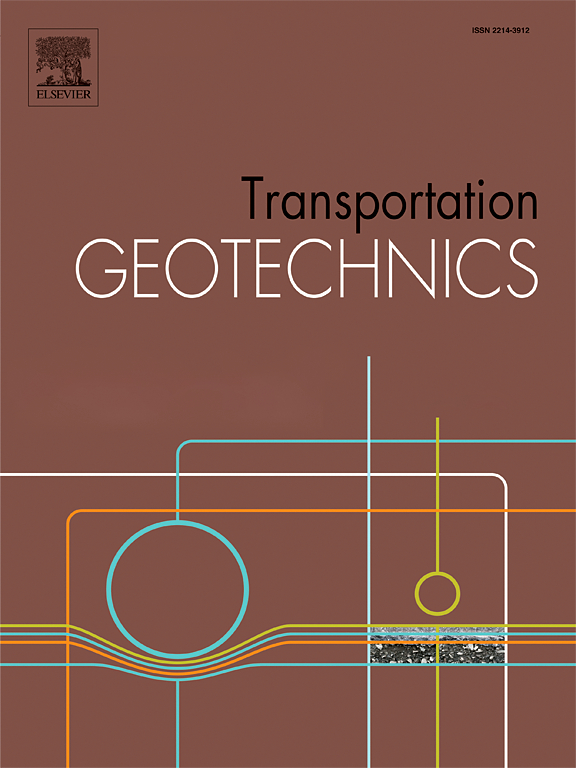Mechanistic-empirical method of pavement design extending unsaturated soil mechanics
IF 5.5
2区 工程技术
Q1 ENGINEERING, CIVIL
引用次数: 0
Abstract
Pavement system that typically constitutes of different soil and material layers is located within the vadose zone that is above the groundwater table, which is in an unsaturated condition. Due to this reason, suction is a crucial stress state variable for interpreting the behavior of pavements in the vadose zone. The Mechanistic-Empirical Pavement Design Guide (MEPDG) serves as a comprehensive design tool that accounts for both the resilient response and environmental influences on pavement material properties. In this study, a series of California Bearing Ratio (CBR) tests were conducted on both saturated and unsaturated compacted soils that are commonly used as pavement subgrade materials in Toronto, Ontario. A modified CBR apparatus was utilized, incorporating orifices drilled into the CBR mold to monitor matric suction, ψ and water content using MPS-6 (or TEROS-21) and EC-5 sensors, respectively. The measured CBR and ψ values along with resilient moduli were then used to develop correlations to estimate resilient modulus, MR of compacted soils required for Level 2 design in the MEPDG. The modified CBR testing procedures used in this study are anticipated to be applicable to other soils for estimating MR, aiding in the design of pavement subgrade materials.
扩展非饱和土力学的路面设计力学经验方法
路面系统位于地下水位以上的渗流带内,处于非饱和状态,通常由不同的土壤和物质层组成。由于这个原因,吸力是一个关键的应力状态变量,解释在渗透区路面的行为。力学-经验路面设计指南(MEPDG)是一个综合的设计工具,它考虑了路面材料性能的弹性响应和环境影响。在本研究中,对安大略省多伦多常用的路面路基材料饱和和非饱和压实土进行了一系列的加州承重比(CBR)试验。采用改进的CBR设备,在CBR模具上钻孔孔,分别使用MPS-6(或TEROS-21)和EC-5传感器监测基质吸力、ψ和含水量。然后使用测量的CBR和ψ值以及弹性模量来建立相关性,以估计MEPDG中二级设计所需的压实土的弹性模量和MR。本研究中使用的改良CBR测试程序有望适用于其他土壤,以估计MR,帮助设计路面路基材料。
本文章由计算机程序翻译,如有差异,请以英文原文为准。
求助全文
约1分钟内获得全文
求助全文
来源期刊

Transportation Geotechnics
Social Sciences-Transportation
CiteScore
8.10
自引率
11.30%
发文量
194
审稿时长
51 days
期刊介绍:
Transportation Geotechnics is a journal dedicated to publishing high-quality, theoretical, and applied papers that cover all facets of geotechnics for transportation infrastructure such as roads, highways, railways, underground railways, airfields, and waterways. The journal places a special emphasis on case studies that present original work relevant to the sustainable construction of transportation infrastructure. The scope of topics it addresses includes the geotechnical properties of geomaterials for sustainable and rational design and construction, the behavior of compacted and stabilized geomaterials, the use of geosynthetics and reinforcement in constructed layers and interlayers, ground improvement and slope stability for transportation infrastructures, compaction technology and management, maintenance technology, the impact of climate, embankments for highways and high-speed trains, transition zones, dredging, underwater geotechnics for infrastructure purposes, and the modeling of multi-layered structures and supporting ground under dynamic and repeated loads.
 求助内容:
求助内容: 应助结果提醒方式:
应助结果提醒方式:


